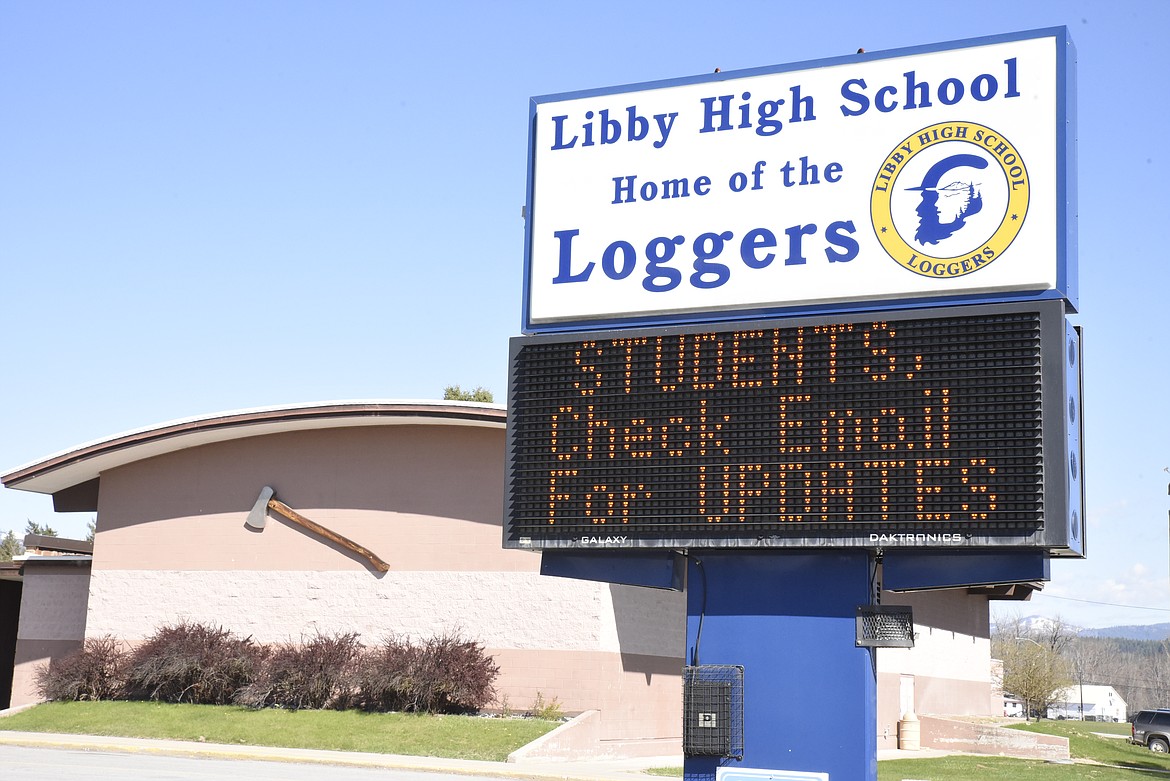Libby teachers adapting to rigors of remote learning
When fifth grade teacher Jessica Theony hosted her first ever Zoom-based check-in with students this week a little less than half of her class logged on to the conferencing software.
The Libby language arts and reading educator normally has 46 students in her classroom. And, in a typical year, April is an intense month of instruction as teachers and students alike prepare for the Smarter Balanced Assessment Consortium testing, Theony said.
But with classrooms empty during the COVID-19 pandemic, school districts and teachers have had to adjust curricula and adopt remote learning.
“I probably have about half of them that are turning in their work regularly and the other half either haven’t done anything or they have paper packets, because they either don’t have Internet access or it’s unreliable or they don’t have devices capable of getting on the Internet,” Theony said. “It’s been a challenge.”
Educators across Libby Public Schools have run into the same situation. Superintendent Craig Barringer said roughly 60 percent of students are returning completed school assignments.
“That’s a D-minus if you’re grading a paper,” he said.
Like districts across the country, Libby had to suddenly — and unexpectedly — move all classroom instruction online, Barringer said. There has been a learning curve for everyone, he said.
“We have had to recreate what we do in about three weeks,” Barringer said. “With that there are things that are working and things that aren’t. It’s a huge challenge for everybody, not just for the teachers, but the families at home.”
Determining which students had access to the Internet was the first hurdle. For those without, district officials created paperwork packets. Next, Barringer said, educators had to recalibrate their expectations given the sudden switch to remote learning.
“It’s been hard to know what we can reasonably expect from home,” he said. “We’re changing what we’ve done since I’ve been in school and trying to do it in three weeks.”
For Theony, that has meant making adjustments. She described the fifth grade curriculum as “vigorous.” She and her colleagues have had to cut back to account for students learning independently.
“We’ve had to adapt it quite a bit,” Theony said. “It’s hard for them, being 10 or 11 years old, to regulate their time.”
The next novel she planned to tackle with her class arrived March 30, which required figuring out the logistics to get it into the hands of her students. In a normal year, she would make reading the book an all-class project, occasionally splitting students up into groups to answer questions.
Today, she assigns about 45 minutes worth of reading. Another teacher assigns roughly 45 minutes of mathematics instruction. The students then complete reading comprehension, vocabulary and spelling exercises.
“Our learning online is much slower. We normally wouldn’t take this long, four weeks, to read a novel,” Theony said. “They’re having to work independently a lot more than they ever would have to.”
Quality of work also has suffered. High achieving students are largely fine, Theony said, but others have submitted “low-effort” assignments.
While communication might be instant in the age of the Internet, Theony has observed a lag that did not exist in the classroom. If she sends an incomplete assignment back with a request or question, it can go days without being answered.
“I would say we’re getting by, but the quality of work we’re seeing is not what it would be if they were physically in school,” Theony said.
Barringer said expectations have to be managed. He said he appreciates parents working with the district in developing best practices for teaching students remotely.
He said he recognizes the added burden remote learning puts on families.
“It’s really trying to get our families to realize we can’t take the path of least resistance on this,” Barringer said. “If we do, we are setting our kids up for failure.”
Barringer worries newly minted fourth graders in the fall will have to spend a portion of the year learning what ought to have been covered in the previous grade. Just as likely is a scenario where teachers have to split time between students who are up on their work and those who lagged behind, he said.
“I think there are consequences, but the consequences are that we have huge gaps between those kids who are doing the work and those kids that aren’t,” he said. “It puts us at big deficits and some of those deficits will be hard to make up.”
Teachers like Theony are doing whatever they can to ensure students receive the assigned material and complete the schoolwork. That includes walking parents step-by-step through setting up Google Classroom for their children over the phone.
She also regularly reaches out to families of students who have been skipping assignments. And in one case, she dropped off materials at a student’s house.
“For my kids, the ones that haven’t been turning in work, I’ve gotten hold of all of them except for one student,” Theony said. “I went to her house and left the work at her door, but there’s no way of knowing if she ever got it. That’s the hard part.”

